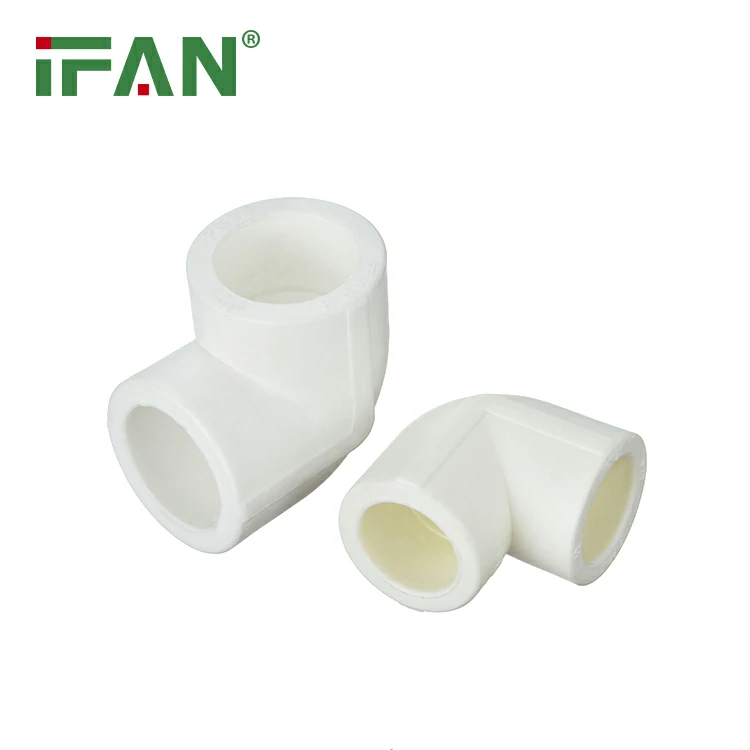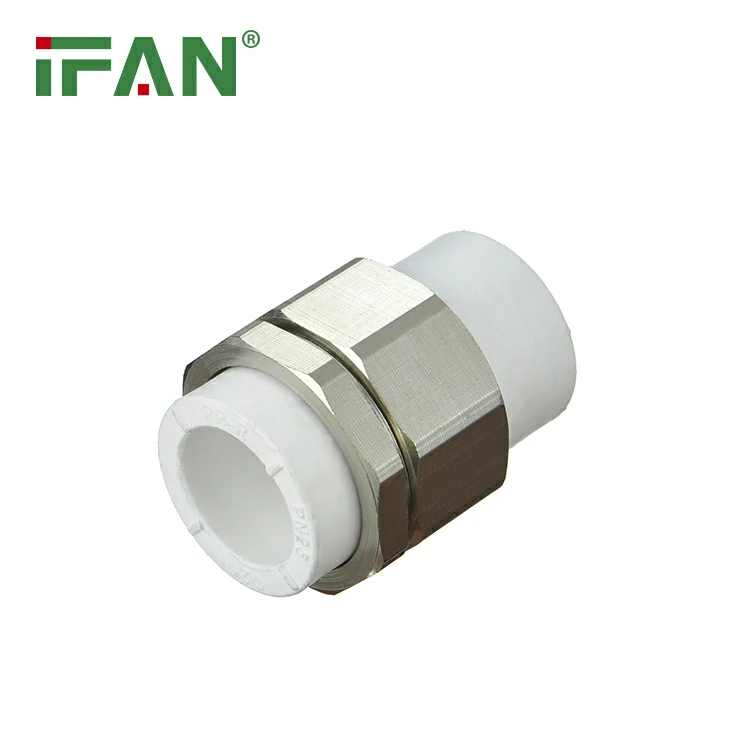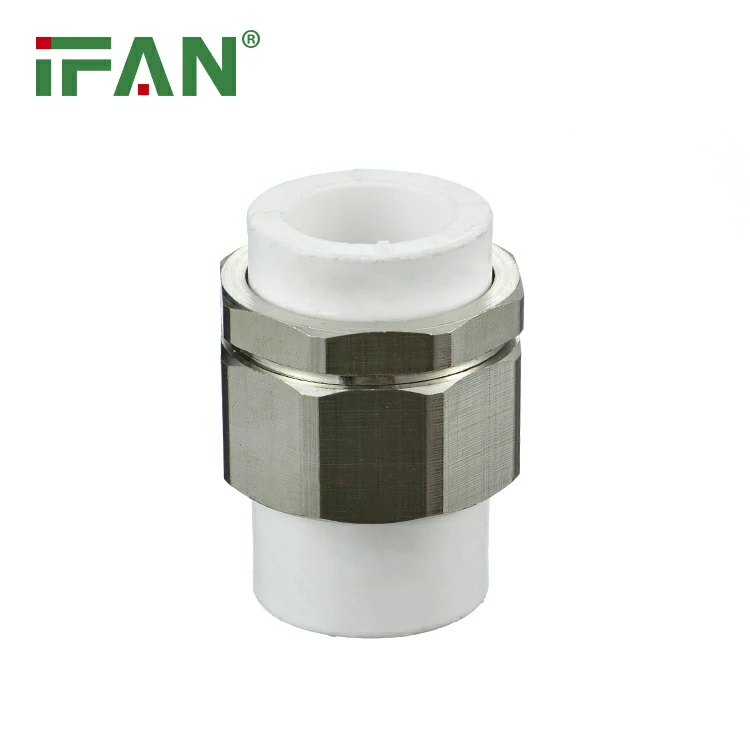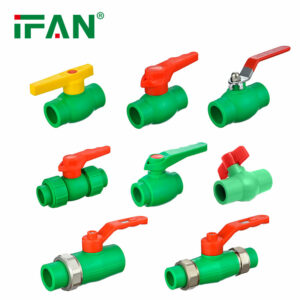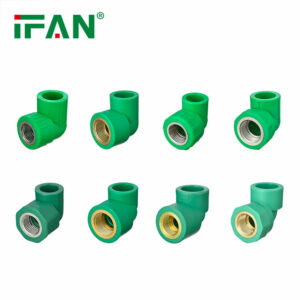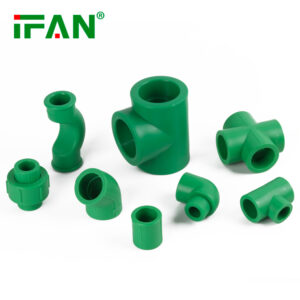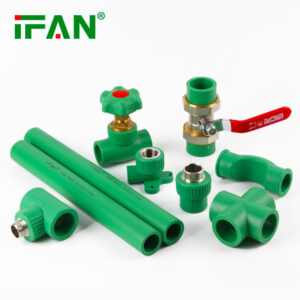Description
IFAN factory 30+ years manufacture experience support color /size customization support free sample.Welcome to consult for catalog and free samples.This is our Facebook Website:www.facebook.com,Click to watch IFAN’s product video.Compared with Tomex products, our IFAN products from quality to price are your best choice, welcome to buy!
Polypropylene Random Copolymer (PPR) fittings have become a popular choice for plumbing systems due to their durability, corrosion resistance, and versatility. These fittings are commonly used for both residential and commercial plumbing projects. In this article, we will provide a complete overview of the different types of PPR fittings and their uses, ensuring that you understand the benefits and applications of these fittings in various systems.
What are PPR Fittings?
PPR fittings are made from polypropylene random copolymer, a type of plastic known for its superior strength, long lifespan, and resistance to corrosion. Unlike metal fittings, PPR fittings do not corrode, rust, or scale over time, making them ideal for use in water distribution and plumbing systems. PPR fittings are lightweight, easy to install, and come in a range of shapes and sizes to suit different types of pipes and applications.
PPR pipes and fittings are most commonly used for hot and cold water distribution systems, as well as for heating systems. Their excellent resistance to high temperatures, pressure, and chemical exposure makes them highly suitable for both residential and commercial plumbing solutions.
Types of PPR Fittings
There are several types of PPR fittings designed for specific applications. Let’s look at the most common types and their respective uses:
1. PPR Elbow Fittings
PPR elbow fittings are designed to change the direction of the pipe in a plumbing system. They are available in various angles, such as 45°, 90°, and 180°. These fittings are essential for navigating around obstacles and ensuring smooth water flow in the system.
– Uses: PPR elbow fittings are often used in residential and commercial systems to make turns in the piping layout. They are commonly used for both hot and cold water systems as well as heating systems.
2. PPR Tee Fittings
A PPR tee fitting allows you to branch off a pipe into two separate lines. The tee has three openings: one for the main line and two for the branch lines. This fitting is available in different configurations, such as equal tees or unequal tees, depending on the size of the pipes being connected.
– Uses: PPR tee fittings are commonly used when you need to create a split in the water supply line. They are ideal for applications that require branching to multiple faucets, appliances, or sections of a building.
3. PPR Coupling Fittings
PPR coupling fittings are used to connect two pieces of pipe together. These fittings are typically straight and are used when a continuous, uninterrupted flow is required between two sections of pipe. They are available in various sizes to fit different diameters of PPR pipes.
– Uses: Couplings are essential when extending a pipe or connecting two sections of piping in a plumbing system. They can be used in both hot and cold water systems, as well as for heating lines.
4. PPR Union Fittings
PPR union fittings allow for easy disconnection and reconnection of pipes, making them ideal for maintenance and repair work. They consist of a body, a nut, and a ring, which can be tightened or loosened to separate the fitting without having to cut the pipe.
– Uses: Unions are commonly used in areas where pipes need to be disassembled for maintenance or replacement. They are often used in water heaters, pumps, and other plumbing systems requiring regular service.
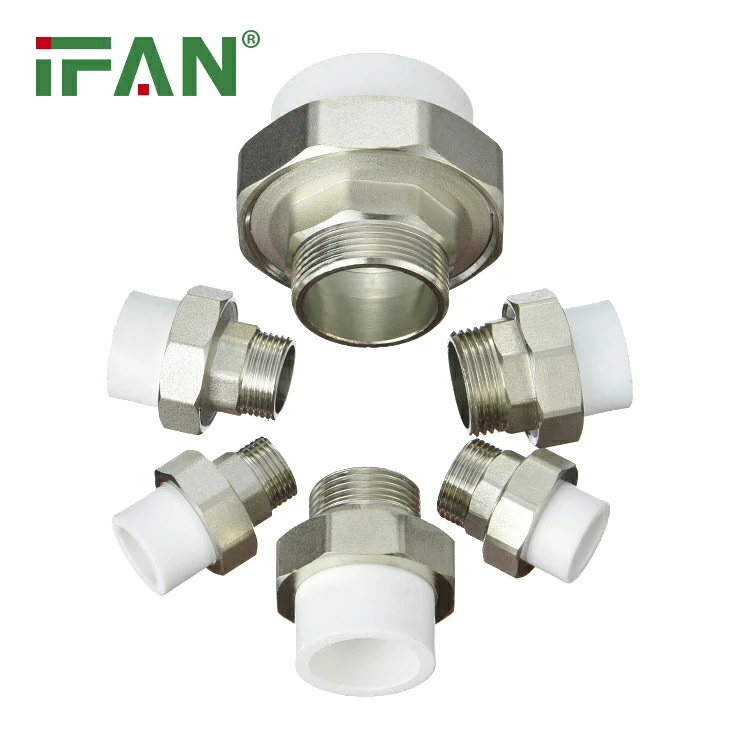
5. PPR Reducer Fittings
PPR reducer fittings are used to join two pipes of different sizes. This fitting allows you to connect a larger pipe to a smaller one, ensuring a smooth transition in the plumbing system without reducing the efficiency of the water flow.
– Uses: Reducers are frequently used when the water supply system requires a reduction in pipe size. They are commonly used in both cold and hot water plumbing systems, as well as in heating installations.
6. PPR End Cap Fittings
PPR end cap fittings are used to close off the end of a pipe, effectively sealing the system. These fittings are important for stopping water flow in certain sections of the system or when capping off unused pipe sections.
– Uses: End caps are ideal for closing unused or non-functional pipe lines. They are typically used in residential and commercial plumbing systems that require temporary or permanent pipe closures.
7. PPR Flange Fittings
PPR flange fittings are used to connect PPR pipes to other systems or components. Flange fittings are secured with bolts, nuts, and washers, allowing for a tight, secure connection. These fittings are available in various sizes and configurations.
– Uses: Flange fittings are commonly used in industrial applications, where a secure, leak-proof connection is essential. They are also used to connect PPR pipes to pumps, tanks, and other equipment.
Advantages of Using PPR Fittings
PPR fittings offer several advantages over traditional plumbing materials, such as metal or PVC pipes. Some of the key benefits of using PPR fittings include:
– Corrosion Resistance: PPR fittings are resistant to corrosion, ensuring long-term durability even in the presence of water and other chemicals.
– Longevity: PPR fittings have a long service life, often lasting over 50 years without degradation or failure.
– Non-Toxic: PPR fittings are free from harmful substances like lead and cadmium, making them safe for use in drinking water systems.
– Energy Efficiency: PPR fittings have excellent thermal insulation properties, helping to conserve heat in hot water systems and reduce energy consumption.
– Recyclable: PPR fittings are fully recyclable, making them an eco-friendly option for plumbing systems.
Applications of PPR Fittings
PPR fittings are used in a wide variety of plumbing applications. Some of the most common uses of PPR fittings include:
– Hot and Cold Water Supply: PPR fittings are widely used in residential and commercial plumbing systems for distributing both hot and cold water. Their resistance to heat and pressure makes them ideal for use in water heaters, faucets, and shower systems.
– eating Systems: PPR fittings are also used in radiant heating systems and underfloor heating installations. Their high-temperature resistance makes them suitable for carrying heated water through pipes without degradation.
– Industrial Applications: PPR fittings are used in various industrial applications where non-corrosive, leak-free connections are required. These applications may involve chemical transportation, cooling systems, and more.
Conclusion
PPR fittings are a highly versatile and reliable option for plumbing systems. Whether you are working on a residential project or an industrial application, PPR fittings offer an eco-friendly, durable, and cost-effective solution for connecting pipes. With their wide range of types, including elbows, tees, couplings, unions, reducers, and end caps, PPR fittings can handle a variety of plumbing needs and ensure long-lasting performance.
FAQs
1. What are PPR fittings made of?
PPR fittings are made of polypropylene random copolymer (PPR), a durable and corrosion-resistant plastic material commonly used for plumbing systems.
2. Are PPR fittings safe for drinking water?
Yes, PPR fittings are non-toxic and do not release harmful chemicals into the water, making them safe for potable water systems.
3. How long do PPR fittings last?
PPR fittings can last for over 50 years when properly installed, making them a long-lasting option for plumbing systems.
4. Can PPR fittings be used for hot water systems?
Yes, PPR fittings are designed to withstand high temperatures, making them ideal for use in hot water systems.
5. Are PPR fittings easy to install?
Yes, PPR fittings are lightweight and easy to install, requiring only basic tools and a heat fusion process to create secure connections.
Related products
-
PPR Fittings
Easy to Install Brass Fittings for DIY Projects


